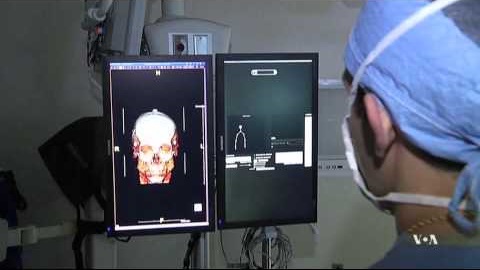At the point when could a feature amusement perhaps spare your life? Another imaging innovation, now being utilized at Methodist Hospital as a part of Houston, Texas, has immediate connections to feature diversions. It can give itemized perspectives of patients’ bodies – helping specialists arrange and execute confused operations with substantially more certainty.
The individuals who surmise that creating feature diversions programming has no other reason than amusement ought to reconsider.

So says Dr. Brian Butler, a radiation oncologist at Houston Methodist healing facility and the primary creator of another imaging engineering called Plato’s CAVE. “Machine architects and feature gamers – truly pushed this sort of engineering into a probability,” he said.
Multi-dimensional pictures
Hollow is an influential handling innovation, in view of both Microsoft and Apple programming, which rapidly imports information gathered by other imaging machines -, for example, CT, MRI and PET scanners – and changes over it into itemized pictures.
Like the illustrations in a feature amusement, the multidimensional color pictures are shown on a touch-delicate screen, empowering specialists to control them and essentially “fly” through body parts from all bearings, pivot them and zoom done and finished.
One of the specialists who uses Plato’s CAVE, Mas Takashima, said having the capacity to plainly envision the operation territory is the way to effective surgery.
“When you have the information so you can then picture precisely what’s going on, it certainly diminishes the anxiety level or the nervousness level of simply pondering, ‘goodness, is there a probability that that vein may be, you know, wrapped around this tumor? ” said Takashima.
Accuracy
As of late, specialists utilized the CAVE framework to arrange a troublesome operation on a patient who had inadvertently shot himself with a crossbow. They could plainly see where the shaft entered the skull and that it was so near discriminating veins.
In any case quite recently, even conspicuous doctors were doubtful about scanner-imaging engineering. Dr. Robert Grossman, who instructs neurological surgery at Houston Methodist Hospital, recalls an experience from 1963.
“At the point when the first CT output was declared, the head of neuro-radiology at our healing facility – he was an exceptionally recognized individual, I won’t specify his name – he said to us, ‘young men, this is a fabrication,'” said Grossman.
Presently, masters say, this is just the starting. Also they say therapeutic imaging innovation will show signs of improvement over the long haul.

